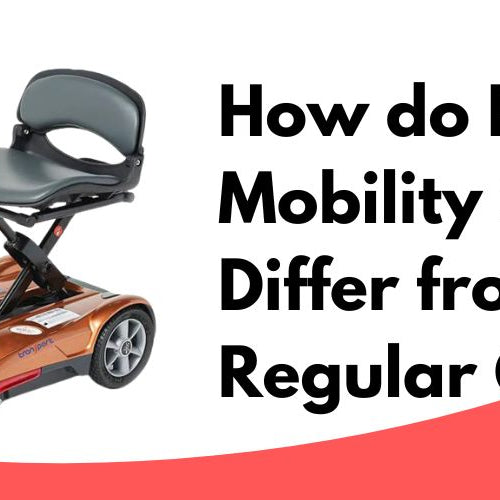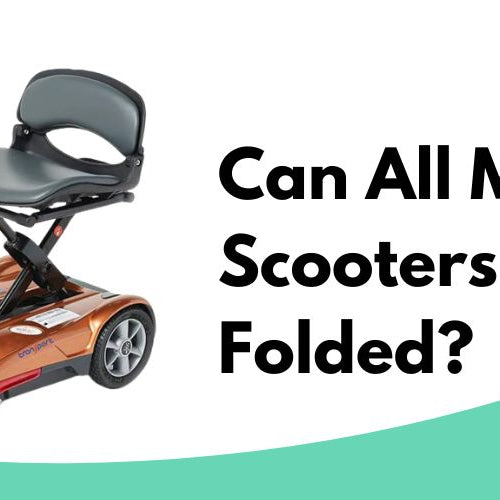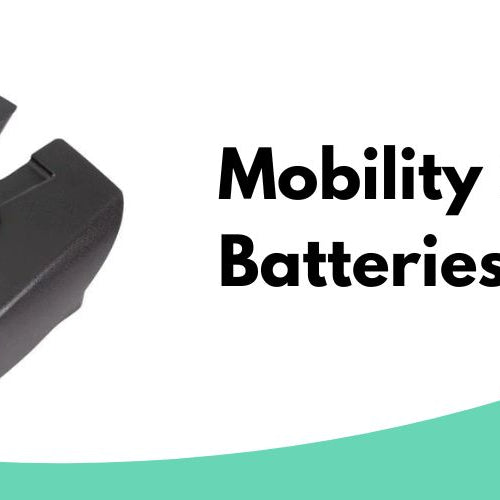Traveling by airplane presents a unique set of challenges for individuals who depend on mobility scooters for their daily activities. One of the main concerns for these travelers is whether or not they can bring their mobility scooters on board the aircraft. Understanding the regulations and procedures in place for air travel with mobility devices is essential for a smooth and enjoyable journey.
Fortunately, mobility scooters can indeed be taken on airplanes, as long as proper guidelines and regulations are followed. Airlines permit passengers to travel with mobility scooters and power wheelchairs, as these devices typically come equipped with non-spillable batteries, which are safe for air transport. Additionally, some mobility scooters are specifically designed to comply with Federal Aviation Administration (FAA) regulations, making them suitable for airline travel.
While it is reassuring to know that mobility scooters can be taken on airplanes, travelers must be aware of specific airline policies, preparation steps, and potential restrictions to ensure a seamless experience. By researching and following the rules set forth by their chosen airline, individuals with mobility scooters can travel confidently and focus on enjoying their journey.
Air Travel Regulations for Mobility Scooters
Shop our Airline-Approved Mobility Scooters today!
TSA Guidelines
The Transportation Security Administration (TSA) has specific guidelines for individuals traveling with mobility scooters. Individuals can remain in their wheelchair or mobility scooter for most of the TSA security process. If a traveler cannot walk through the detectors, they may request a manual pat-down. Additionally, passengers can request a same-sex screener to perform the pat-down.
FAA Policies
The Federal Aviation Administration (FAA) has regulations for traveling with mobility scooters and lithium-ion batteries. According to FAA policies, lithium batteries for mobility scooters must not exceed 300 amp hours between all batteries in the device. Most mobility devices use two (24 volts) or three (36 volts) batteries, and some even use four (48 volts). Lithium batteries must be in protective cases, with the battery pack or wire harness disconnected from the mobility device.
Airlines Policies
While specific airline policies may vary, passengers are generally allowed to take mobility scooters on planes. To ensure a smooth boarding process, it is helpful to notify the airline at least 48 hours in advance and provide the dimensions of the scooter. Planning ahead can make traveling with a mobility scooter more enjoyable and hassle-free. Some airlines may have additional requirements, so it is crucial to check with your specific carrier before your flight.
Pre-Booking Preparations
Contacting Airlines
Before booking a flight, it's essential to contact the airlines regarding their policies on mobility scooters. This can help to ensure a smooth experience and avoid any last-minute surprises during boarding. Notify the airline at least 48 hours before the flight, providing the scooter's dimensions for their reference. While most airlines don't require this information, it can facilitate the boarding process.
Battery Types
Mobility scooters can be taken on planes, but it's important to consider the type of battery your scooter uses. Most scooters are equipped with non-spillable batteries, which are typically allowed on airplanes. However, different airlines may have specific regulations for lithium or lead-acid batteries. Be sure to confirm the airline's battery requirements when contacting them about your mobility scooter.
Collapsible Scooters
If you own a collapsible mobility scooter, traveling by plane can be even more convenient. These scooters are designed to be easily disassembled and stored, taking up less space in the aircraft's cargo area. When informing the airline about your mobility scooter, mention if it's collapsible, as this might have an impact on storage procedures or additional fees. With proper planning and communication, air travel with your mobility scooter can be a stress-free and enjoyable experience.
At the Airport

Check-In Process
When traveling with a mobility scooter, it's important to coordinate with the airline beforehand. Most airlines allow mobility scooters on their planes, as they are equipped with non-spillable batteries. To ensure a smooth check-in process, contact the airline in advance to provide information about the scooter's make, model, and battery type.
Upon arriving at the airport, inform the check-in staff about the mobility scooter. They may ask some questions and provide guidance on the next steps. It's also a good idea to have the scooter's user manual and any necessary tools (such as a wrench to disassemble the scooter) readily available throughout the journey.
Security Checkpoints
At security checkpoints, passengers with mobility scooters should expect some additional screening procedures. You can remain in your wheelchair or scooter during most of the Transportation Security Administration (TSA) security process. If you cannot walk through the detectors, request a manual pat-down. Remember to ask for a same-sex screener to perform the manual pat-down to ensure your comfort.
Airlines typically allow passengers to take their personal wheelchairs, mobility scooters, and walkers all the way to the gate and the aircraft boarding door, where they can be gate-checked. Remember to have a luggage tag attached to the mobility scooter to avoid any confusion during transfer.
Boarding the Aircraft
Gate Checking Scooters
Traveling by plane with a mobility scooter is possible with the right level of planning. The Air Carrier Access Act allows passengers to take their personal mobility scooters, wheelchairs, and walkers to the airport gate and the aircraft boarding door. To ensure a smooth boarding process, it's essential to inform the airline of your mobility scooter ahead of time. This allows them to accommodate your scooter's specific dimensions and weight requirements.
When you arrive at the gate, the airline personnel will assist you with the gate-checking process. Gate-checked scooters must have non-spillable batteries to comply with aviation safety regulations. The airline staff will carefully handle your mobility scooter, helping with disassembly and proper storage in the aircraft's cargo hold.
Aisle Chairs
In most cases, mobility scooters are not allowed in the passenger cabin, mainly due to their size and potential obstruction during an emergency situation. Instead, passengers with mobility issues can use an aisle chair to board the aircraft.
An aisle chair is a narrow, wheeled chair specially designed to navigate the tight aisles of an airplane. Once you reach the aircraft door, an airline employee will assist you in transferring from your mobility scooter to the aisle chair. This process ensures that you can comfortably board the aircraft and reach your designated seat with minimal inconvenience.
Keep in mind that aisle chair assistance must be requested in advance, typically when booking your flight or at least 48 hours before departure. This ensures the airline has the necessary equipment and staff available to assist you during the boarding process.
By following these guidelines and adequately preparing for your journey, you can ensure that your experience traveling with a mobility scooter on an airplane is both enjoyable and hassle-free.
Arrival and Retrieving Your Scooter

Upon arrival at your destination, retrieving your mobility scooter can be a fairly smooth process if you follow the necessary steps. First, it is your right under the Air Carrier Access Act to have your mobility scooter or wheelchair gate-checked, which means it will be available to you at the aircraft boarding door or jetway upon arrival, even if you have a connecting flight.
To ensure a hassle-free experience, make sure to inform the airline staff in advance about your mobility scooter and any specific requirements or accommodations you may need. This will help them be better prepared to assist you and return your scooter according to your preferences.
After disembarking the aircraft, airline personnel should return your mobility scooter to you in the jetway. If your scooter was stored in the cargo hold as required for non-collapsible models with non-lithium-ion batteries, you may need to wait for the baggage handlers to unload and deliver it to the gate area.
Once you receive your scooter, inspect it for any potential damage or missing parts before getting on it or moving away from the gate area. In case of any visible damage, immediately report it to the airline staff and follow their guidelines or instructions for filing a claim.
Keep in mind that, depending on the airport's size and layout, you may experience a longer waiting time for your scooter to be returned. Additionally, if you have connecting flights, it is essential to allocate sufficient time between flights to ensure the smooth transfer of your mobility scooter and minimize any inconvenience.
International Travel
Traveling internationally with a mobility scooter is possible and can be a smooth experience with proper planning and coordination. Air travel with mobility scooters is permitted, as they are equipped with non-spillable batteries that meet safety regulations. To ensure a hassle-free journey, it is essential to understand the various requirements and steps involved.
Before booking your flight, it's crucial to notify the airline about your mobility scooter and its specifications. Airlines have specific guidelines for traveling with scooters, including battery size restrictions and documentation requirements.
It is recommended to confirm if your mobility scooter falls within the allowable limits set by the airline. Some airlines may require additional information or documentation regarding the battery, such as its watt-hour capacity and safety data sheet.
When packing for your trip, it is essential to prepare your mobility scooter for air travel. This may include disassembling certain parts, securing loose components, and marking any special handling instructions. Check your scooter's user manual for any specific guidelines or precautions required during transportation.
On the day of travel, arrive at the airport with ample time to navigate the check-in, security, and boarding processes. You can use your mobility scooter up to the boarding gate, where an airline representative will assist in checking your scooter and placing it in a designated medical transportation storage area.
Airports and airlines are required to provide assistance to travelers with mobility scooters to ensure a safe and comfortable journey. Familiarize yourself with the Air Carrier Access Act, which establishes the right of passengers to take their personal mobility scooters, wheelchairs, and walkers to the airport gate and the aircraft boarding door.
By following these guidelines and preparing in advance, international travel with your mobility scooter can be a seamless experience, allowing you to enjoy your destination without unnecessary stress or inconvenience.
Tips for a Smooth Experience
One important aspect of traveling with a mobility scooter on an airplane is planning ahead. To ensure a hassle-free experience, follow these useful tips:
-
Inform the airline in advance: Notify your airline at least 48 hours before your flight that you will be traveling with a mobility scooter. Provide them with the dimensions of your scooter to avoid any unwanted delays during the boarding process.
-
TSA Pre-check: Consider signing up for TSA Pre-check to save time and avoid stress at the airport security checkpoints by going through a more streamlined screening process.
-
Battery type: Ensure your mobility scooter has non-spillable, dry-cell, or gel-cell batteries. If your scooter uses lithium-ion batteries, check with your airline whether they meet specific requirements for air travel.
-
Doctor's note and paperwork: In some cases, airlines may require a doctor's note or additional paperwork before approving the transportation of your mobility scooter. Be prepared with all necessary documents to ensure a smooth travel experience.
-
Take pictures of your device: Before handing your scooter over to airline staff, take photographs of your device, especially any fragile components. This can be helpful in case any damage occurs during transportation.
-
Scooter retrieval: After your flight, retrieve your mobility scooter at baggage claim as soon as possible to minimize potential damage or delays.
By following these tips and being proactive, individuals traveling with mobility scooters on airplanes can have a smooth and enjoyable experience.








Leave a comment